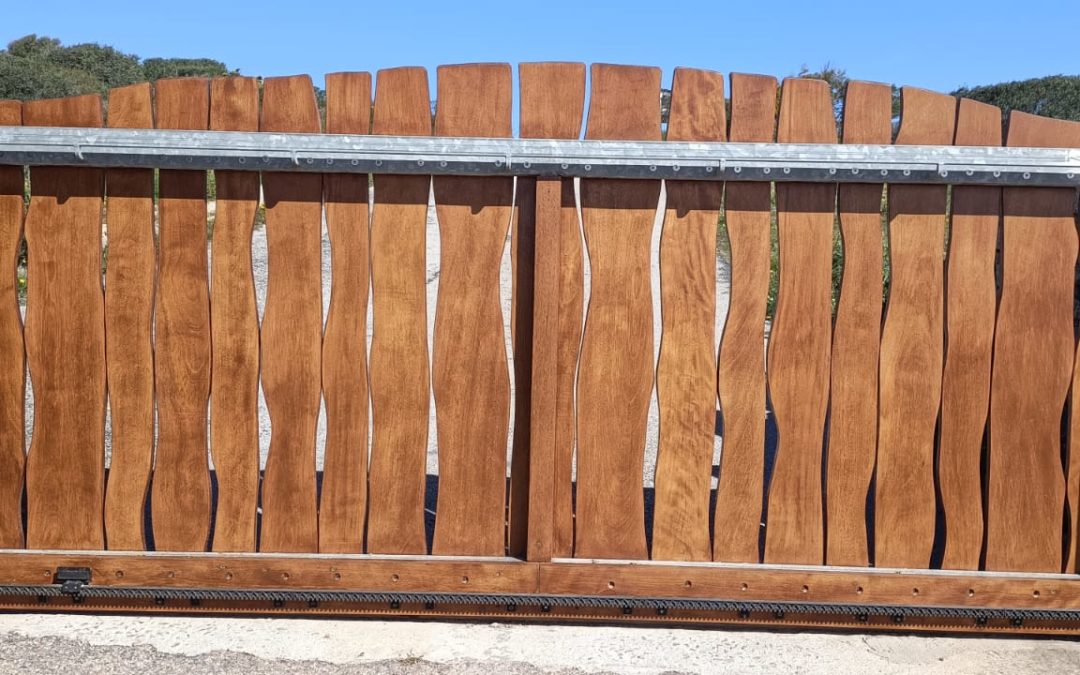This note provides information on activities carried out by the Consortium, mostly aimed at maintaining the functionality of the main infrastructures (water, sewerage, electricity, roads). Information on more general Council actions is also reported. The collection of detailed documentation of the village’s infrastructure is still in progress. Ordinary maintenance activity and private aspects regarding consortium members inside the individual properties are not reported.
Index
- General information
- Institutional web site
- General Assembly 2023
- Situation about common area of the Villaggio
- Activities of the Consortium
- Water system
- Waste water sytem
- Electrical installations
- Entrance gate, safety and circulation
- Waste management
General Information
Institutional web site
Please note that the institutional website of our village has now been operational for about a year at www.capizzadivacca.it. There you will find this newsletter as well as other useful information for all villagers. The protected web area ‘The Consortium’ contains information reserved for registered Consortium members (https://capizzadivacca.it/registrazione).
We also inform all users that the following email addresses are available to them:
- For general information: info@capizzadivacca.it
- To contact the President: presidente@capizzadivacca.it
- To contact all Council Members: consiglio@capizzadivacca.it
General Assembly 2023
We would like to inform members that the General Assembly 2023 will take place on 7 August 2023 at 5 p.m. at a location in the village yet to be specified. In the meantime, we would like to remind that the entire Council will have to be renewed this year. Members will be summoned and informed of all details in due course by certified (PEC) email.
Situation of the village common areas
After a few years of stagnation, collaboration and discussion were resumed and finalised with Mrs Cinzia Scanu, who still owns the common areas within the village (streets, Stazzu, squares). There were two meetings and other contacts that allowed various aspects to be addressed:
Ruoni sewage lifting station: We clarified that there is no direct connection with the main sewage collector located beyond the provincial road in sight, lacking a project and authorisations. Following the restructuring works already carried out, the Municipality of Santa Teresa Gallura is awaiting the appointment of the tester who is expected to confirm the suitability of the infrastructure, a condition for its acquisition by Abbanoa (Sardinian water enterprise).
Common areas within the Village: Basically, every space outside the individual private properties is still owned by Mrs Scanu. The transfer of roads, clearways and small squares to the Consortium free of charge has been focused on, while the Stazzu and other green areas remain the property of Scanu. The transfer of the viability is to be understood as including the service infrastructures (water, electricity, sewage…) underground. At the same time, an equal commitment is requested to manage the main external road system connecting Ruoni and Capizza di Vacca. The refinement of this scenario will allow the Consortium to get its hands on the primary infrastructures, reselling them with updated criteria and regulations, to the benefit of the availability and reliability of services and better cost control.
Consortium Activities
Water system
In the year 2022-2023, the overall water consumption was similar to previous years, with a slightly higher percentage of leaks detected, due to both localised problems at some points in the network and on the main reservoir at Capizza Alta. Delivery points with insufficient pressure were reported. The main interventions concerned (1) emptying, sealing, sanitising and special painting of the internal walls of the large tank (90 m3), which had cracks and leaks, (2) repairs in some points of the network where metallic dust had formed occlusions that limited the flow. Some repairs were also made to meters and, in general, consumption was monitored through both monthly readings and more punctual observations, enabling leakage problems to be reported to the consortium members even within the properties.
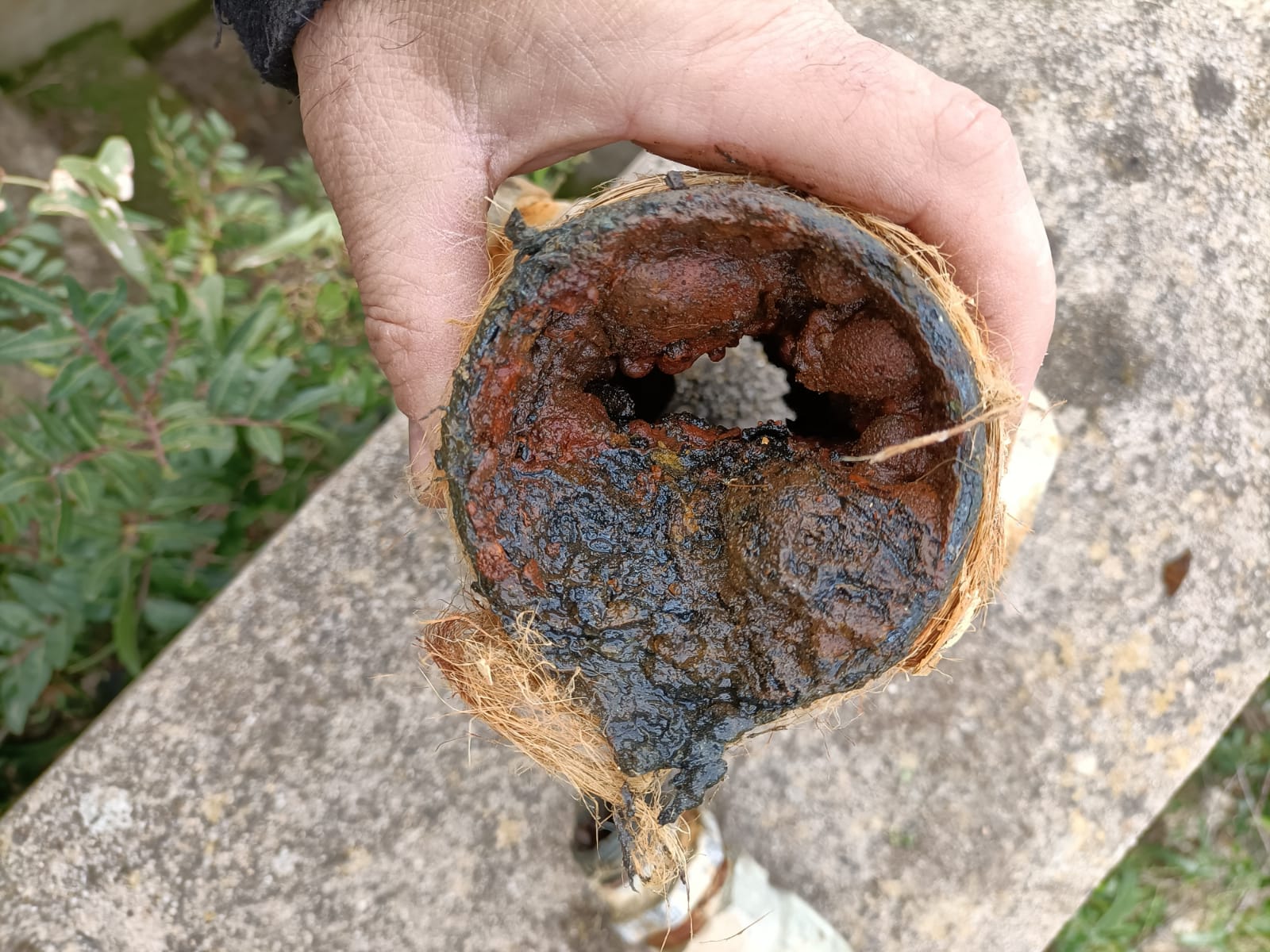
From the latest readings, the level of losses has reduced, but the network will certainly need further maintenance over time. As a statistic, in the four-year period 2019-2022, the consumption recorded by the meters, net of network losses, was around 10,000 cubic metres. In 2021, the Consortium commissioned a professional to carry out an analysis of the water network and the related technical and management problems, within which a survey was also carried out with users.
Sewerage system
The sewerage system had a major problem in August 2022, penalising some users. Since the sewerage network runs for a large part within the properties, in this case it was complicated to identify the point of rupture and find the most appropriate solution that would allow more efficient maintenance for that section in the future. The episode taught us that the routing of the network is partly unknown and that preventive and extraordinary maintenance actions are hindered by several factors, which will have to be overcome over time. The following photos show some phases of the work in progress:
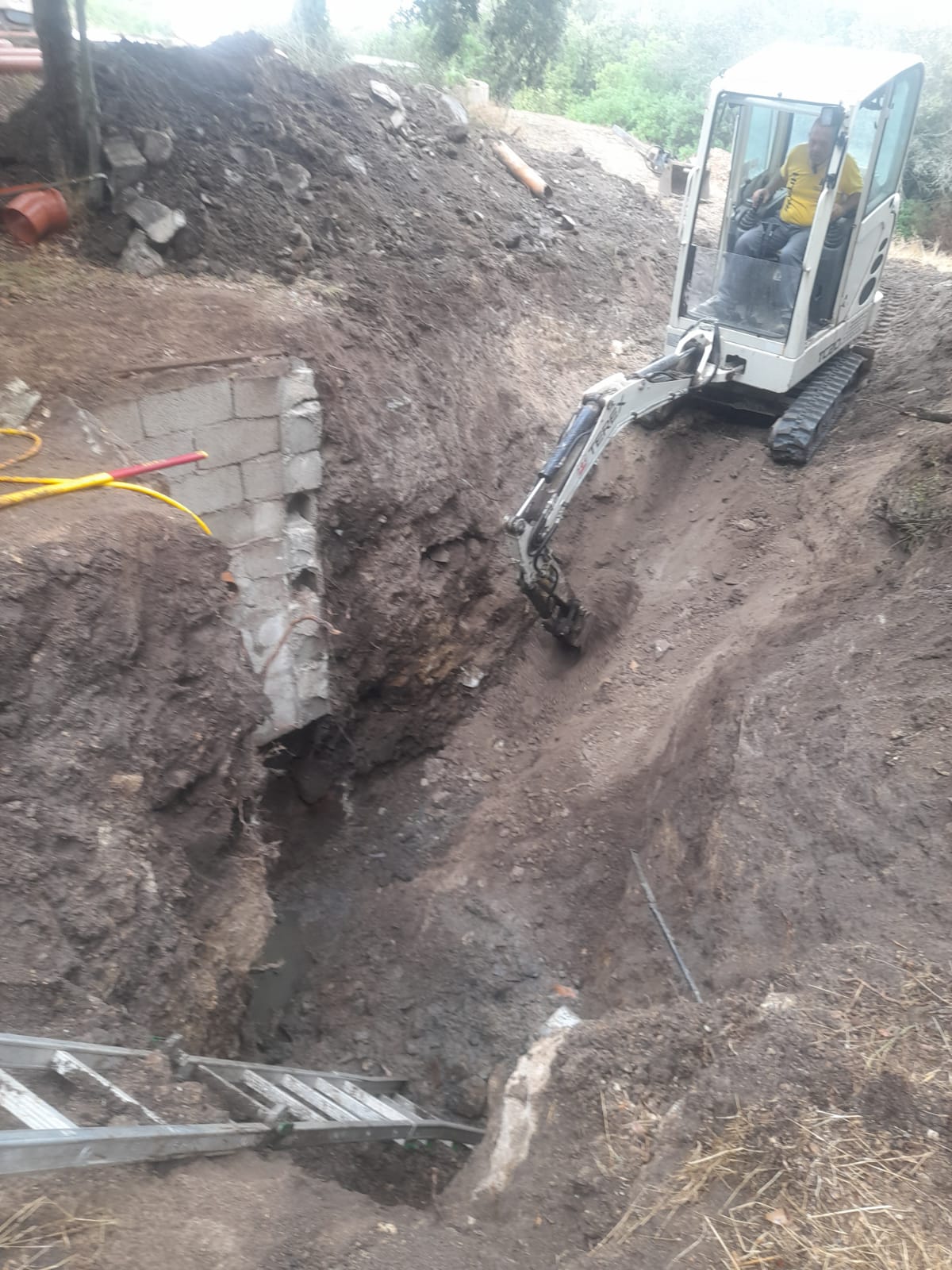
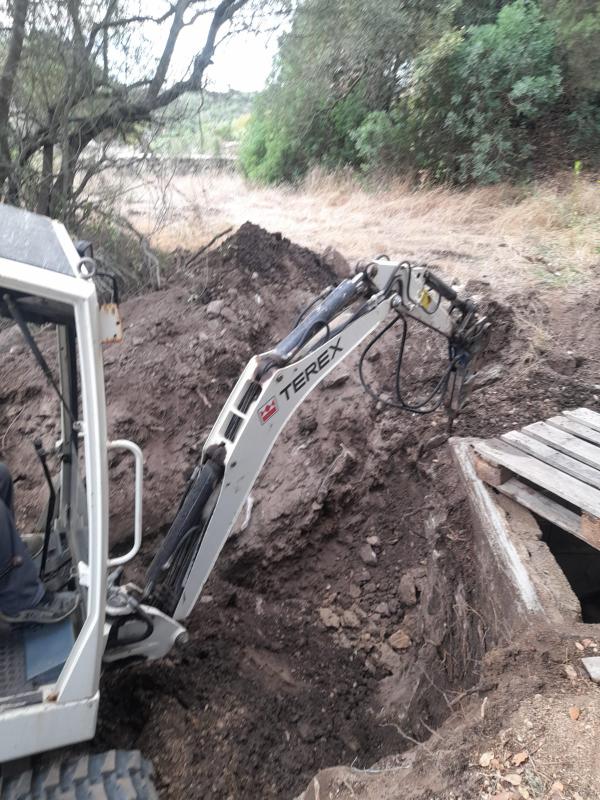
It should be noted that the Consortium still participates in the operation of the waste water lifting station located in Ruoni (serving Capizza, Ruoni Alta, Valentina and a portion of Ruoni’s inhabitants) and that for years it has been in Abbanoa’s charge. The operation of the station is a necessary condition for all connected users. For years, Capizza has been covering electricity costs and is a creditor of unpaid dues from other users, including the municipality. After the upgrading and refurbishment works of the last few years, the scenario in the near future is that the municipality will carry out the testing, which will be followed by the transfer of the infrastructure (and thus the associated charges) to Abbanoa. On this aspect, Consorzio Capizza and Ruoni Alta have consulted and agree on the above objectives. The photo of a few years ago, below, shows the station being upgraded.
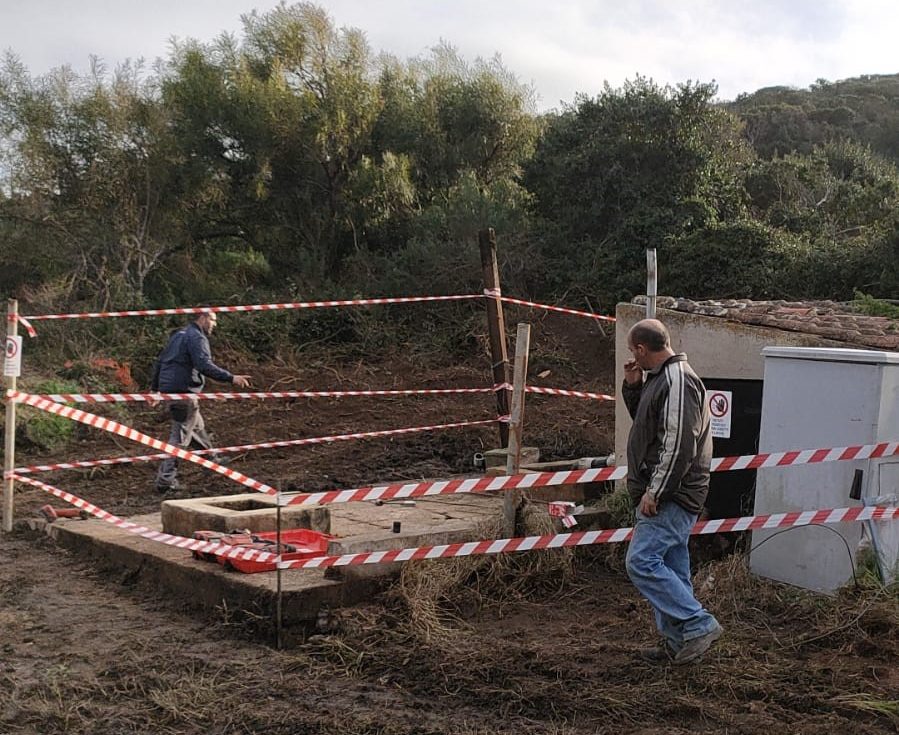
Electrical Installations
Works on the power grid
The operation of the internal electricity network is dependent on the reliability of the ENEL network (which has had a few brief power failure episodes). As an internal network, the system maintains the original structure used to power the pumps of the small reservoir and the old Stazzu (not in operation) and to light the village streets.
The current network includes cables, conduits, obsolete manholes, most of which are inadequate and do not correspond to current regulations. Consequently, in addition to frequent minor maintenance and equipment replacement work, it is necessary to plan a progressive rewiring, earthing, and route revision of the network. Priority was given to the portion of the network considered most problematic (low Capizza) by inserting new cables and, where necessary, new conduits. New lighting fixtures were installed in streets not served by consortium lighting.
This is only the beginning of a work that should allow for a segmentation of the lines and possible optimised management of consumption. All of this will have to be coordinated in a project that also includes the other service networks in the Village and, consequently, can be realised in a few years.
The video below left shows an example of a network criticality, later solved, resulting from inadequate cabling and network deterioration. It was necessary to resolve some cases of areas not covered by consortium lighting (new lighting using spare poles) as shown in the video on the right (work in progress on an unlit side street).
In the Village there are several services dedicated to information and security on which the Council has continued its actions:
- STEL Wi:fi Service (to which a dozen consortium members belong): The power supply servitude was eliminated at STEL’s expense by setting up a specific photovoltaic system
- B-Gates system for gate opening by mobile phone: The entire data base and the list of activations for each housing unit (consortium members and non-members) were redefined. Painstaking work to rebuild and fine-tune the data system, which is now administered directly by the Consortium. The Council is also recording the other ‘keys’ used to enter the Village (remote controls, mechanical keys).
- Defibrillator: Purchased 2 years ago by the Consortium, it will only be put into operation now, because it needed a suitable case and stand and a more visible and electrically powered location at the village entrance. The following photo shows the placement of the defibrillator near the ENEL cabin at the village entrance.

Entrance gate, security and traffic
The entrance gate was reformed, repainted and also underwent extraordinary maintenance of the mechanics. The photo below shows the carpenter’s extraordinary maintenance work, which was later followed by the need to also adjust the mechanical part. The automatic gate opening sensor was also repositioned and the flashing light repaired.
On the subject of security, different aspects were examined:
- In the health sector, the local institutions that manage volunteer emergency assistance were contacted. They will be equipped with remote control for the entrance gate and together will focus on mechanisms and rules to make the service more efficient.
- On the subject of the movement of unauthorised outsiders, the analysis is still in progress and the data collection carried out will be a useful starting point for establishing the extent of this and analysing with the consortium members how best to guarantee safety without interfering with the autonomy of each.
- On the external road network, under an agreement with the company that owns Ruoni Alta, an extraordinary cleaning of the Ruoni-Cancello Villaggio Capizza road was carried out (see photo below left). Within the village, there are still limited portions of the viability to be cleared on side roads.
- In the internal road system, drystone perimeter walls are often subject to collapse due to vegetation and the mistral (see photo below).
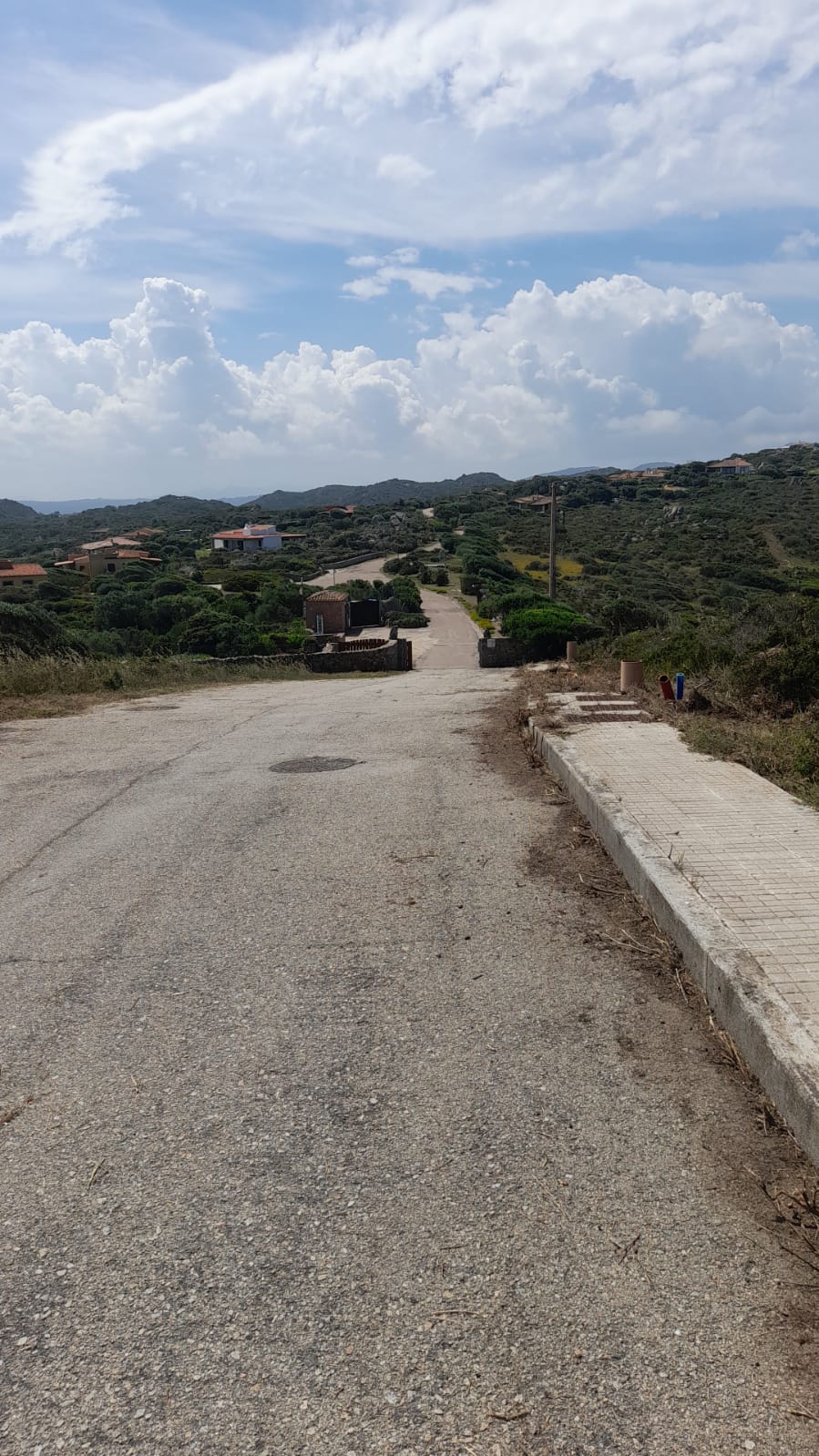
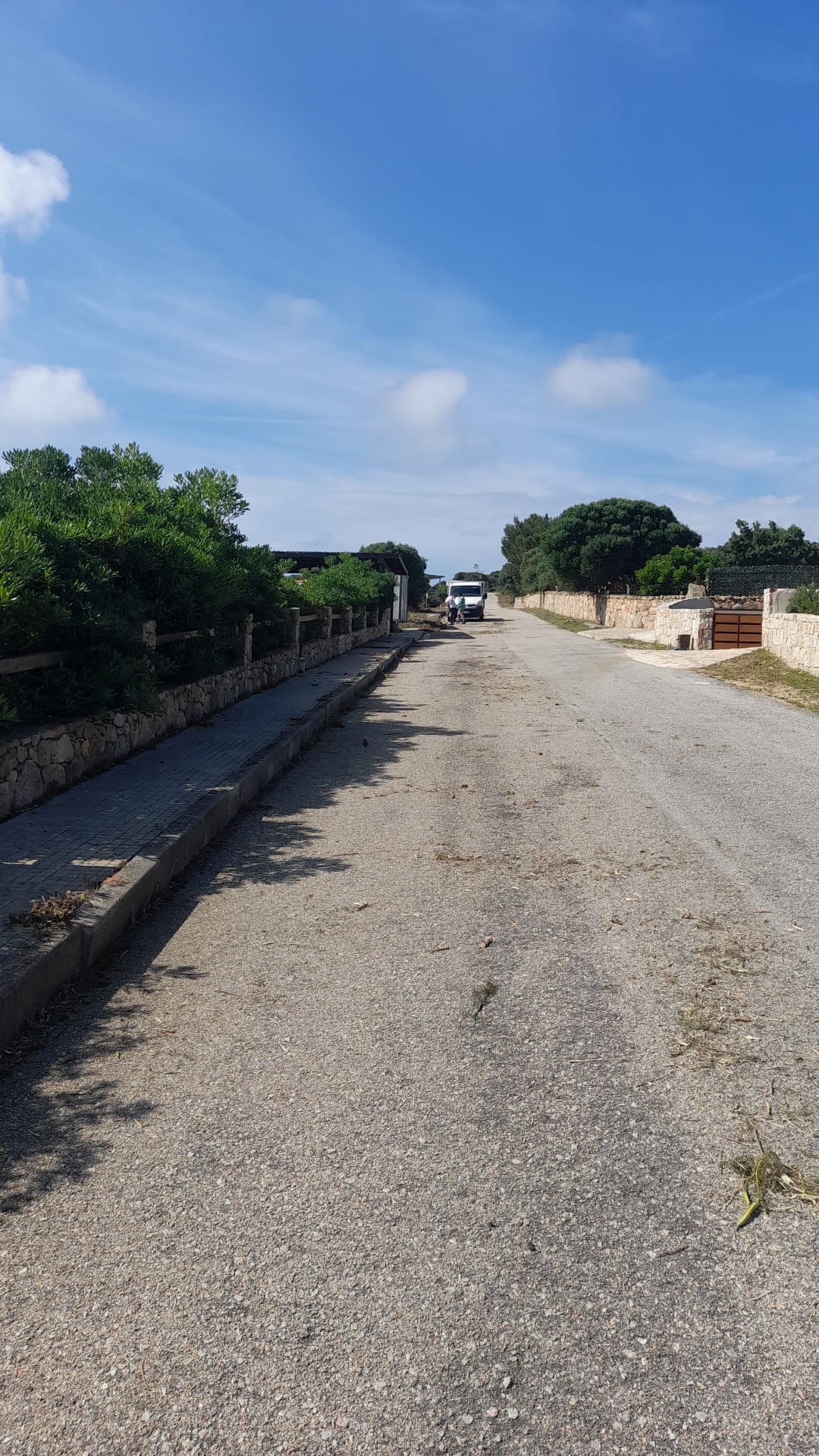


The ‘isola ecologica’ and waste management
The infrastructure is always problematic because owners, guests, businesses not always properly instructed converge there. In some cases offenders have been identified and asked to solve the problems created. In the common outdoor areas, inappropriate behaviour is reported as usual that damages the image of the village. Such behaviour also damages common outdoor areas.
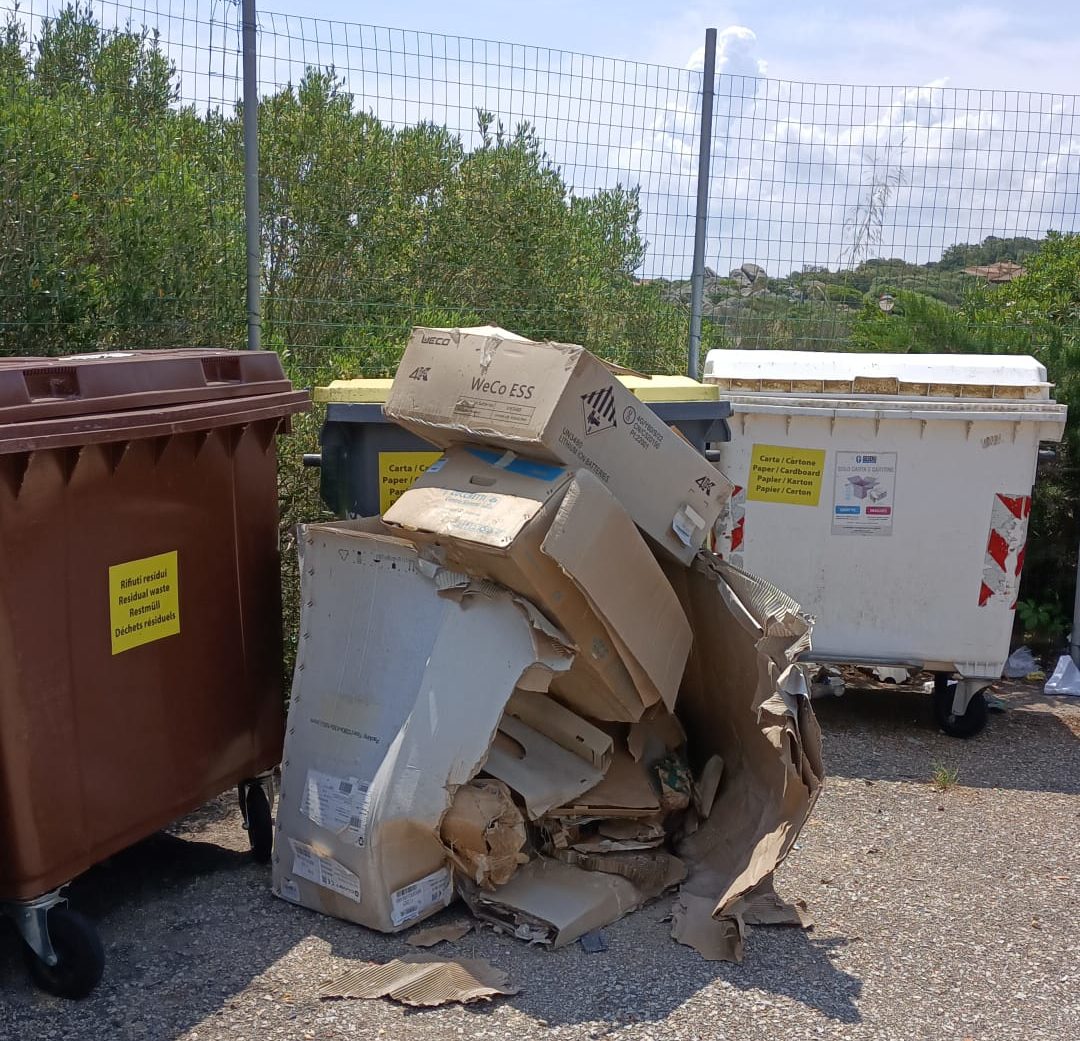
To fight against these phenomena, the council took several preventive actions: 1) Installation of new containers as shown in the video above. 2) Installation of a multilingual sign on the door of the ecological island (see photo below left). 3) Voluntary (and exemplary) waste collection along the common areas. All that remains is for everyone to behave with civility and respect.


